Your computer has completely stopped responding and you identified that the source of the problem is nothing but the motherboard.
Now, there’s only one question on your mind.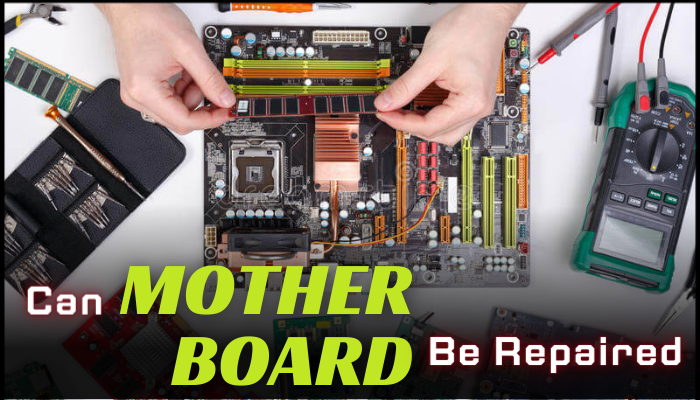
Can the motherboard be repaired?
Don’t freak out. I know it can be overwhelming when an important component like a motherboard can render your entire build useless. However, I’ve been in the same situation and, as a tech enthusiast, I can tell you what you need to do next.
So, put on your reading glasses and read every section of this article without skipping anything.
Is Motherboard Worth Repairing?
Your motherboard is definitely not worth repairing when we are talking about a laptop. For desktops, you can do it as long as the damage isn’t extreme. Laptop motherboards have other components soldered onto them so those will have to be replaced during your repair.
If you are one of the rare lucky ones whose motherboard wasn’t damaged extensively, then you can give repairing a shot. You won’t have to worry too much about the expenses as well.
Also, check out our separate post on how to fix motherboard HDMI no signal.
With laptops, it’s a very complicated process, even if your motherboard hasn’t been damaged to a great extent.
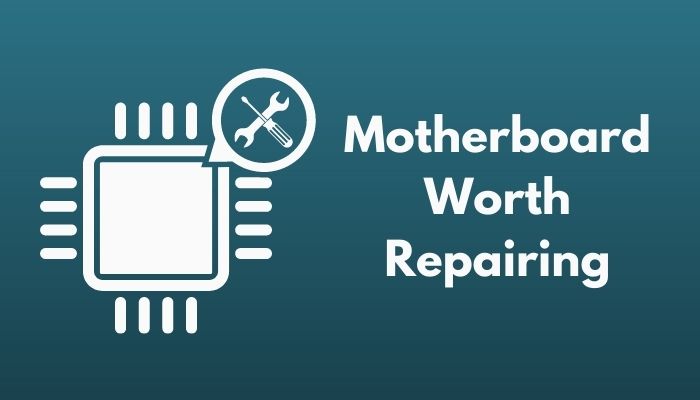 Related contents you should read to Motherboard Screws Universal or not.
Related contents you should read to Motherboard Screws Universal or not.
This is because, unlike desktops, the CPU, GPU, and memory in a laptop are always soldered to your laptop’s motherboard. This means that if your laptop motherboard is damaged, you might have to repair or replace other components as well.
Keep in mind this isn’t really an issue if your motherboard can be repaired without replacing the whole unit.
However, if the motherboard is damaged beyond repair, and you need to look for a replacement, you will also have to replace all the other components which include the CPU, GPU, and memory.
You do the math. There is absolutely no way that it is worth repairing a motherboard when you have to replace other components as well.
Can Motherboard Destroy CPU?
A motherboard does have the potential of destroying a CPU but this will happen only if there’s something wrong with the motherboard power regulator. A dead motherboard can also destroy other components with a current overload or other electrical hazards.
The power regulator is what determines whether the CPU will get damaged or not because that’s the component that regulates all the current and voltage going to the RAM and CPU.
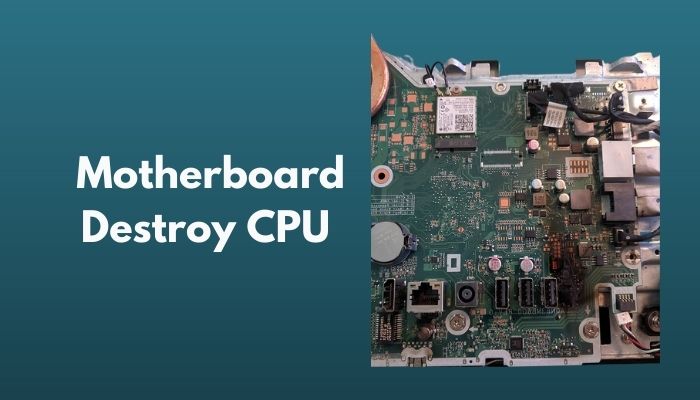
One thing you need to keep in mind while reading this section is that when a motherboard’s capacitor or other electronic device dies, your motherboard might still be working but it will end up damaging other components.
Have some time to spare? Quickly check out our epic guide on are motherboard standoffs necessary.
On the other hand, if your motherboard is completely fried or dead, then there’s no room for it to damage anything else, so all of your other components are safe. Your motherboard is the only thing that’s damaged.
A similar question many people wonder about is whether a motherboard has the potential to damage the RAM. Well, RAMs typically go bad on their own so it’s hard to test whether the damage is actually done by the motherboard or not.
If your RAM is suffering you can try enabling XMP in BIOS settings.
What Causes Motherboard To Fail?
You know that motherboard is the issue but you are probably still confused exactly how your motherboard ended up in this situation. Well, the most common reason why motherboards go bad is due to excess electrical shocks, excess heat, or simply physical damage.
When your motherboard is exposed to heat more often, the chances of it wearing out are increasing.
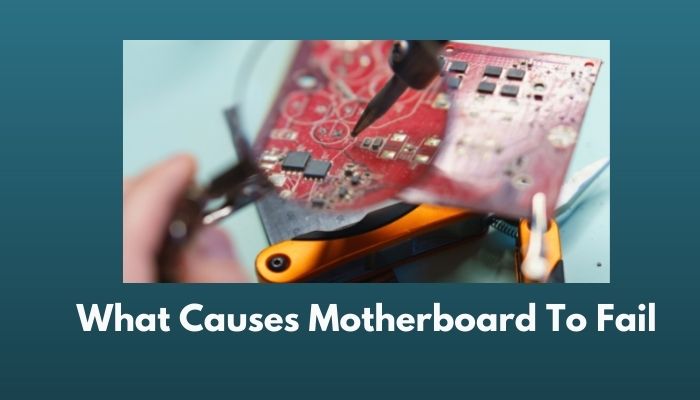
Power surges are another prime reason for failing motherboards but there is a way to make your motherboard less prone to damage during a power surge.
You can do this by installing something called a surge protector but keep in mind that some extreme electrical surges can be powerful enough to overpower the surge protector and destroy the motherboard.
Another thing that is very damaging to motherboards is water. If anything liquid somehow finds its way into the case, you can say goodbye to your motherboard.
Check out our experts tested and reviewed the best RGB CPU coolers.
FAQ
What happens if the motherboard is damaged?
When your motherboard is damaged, you should have no proper response from your PC when you try powering it on. If it does power on, you will see some blue screen warnings and errors.
Can a fried motherboard be repaired?
In some very rare cases, a really experienced technician might be able to repair a fried motherboard, but there is a very good chance that your PC might run into random issues. Since the motherboard is the central component of your PC, I suggest you to get a replacement if possible.
How much does it cost to fix a motherboard?
The costs will obviously vary depending on your specific problem with the motherboard but generally, motherboard repair or replacement usually costs around 150 to 300 dollars.
Can bad RAM damage the motherboard?
If the RAM module gets damaged, it is highly unlikely that it will end up damaging the motherboard and other components. The RAM voltage is generated by the motherboard itself. If it detects a short circuit, it will simply cut its power before any damage is done.
Do you need to reinstall Windows after replacing the motherboard?
Yes, absolutely. Every time you make a major hardware change, you need to reinstall. There are some workarounds that don’t need you to reinstall Windows but it doesn’t work perfectly all the time.
Will I lose my data if I change my motherboard?
No, there’s nothing to worry about when it comes to data storage. Remember that your data isn’t actually stored on the motherboard, it is stored on the hard drive. As long as you are not changing the hard drive, all your personal files will remain exactly the same.
Can I replace my motherboard with a different brand?
Yes, there is no problem when it comes to swapping motherboard manufacturer’s but you need to remember to check to make sure that every port matches with the old motherboard perfectly.
Can I change the processor without changing the motherboard?
As far as I know, there’s no way to change the processor if you are not changing the motherboard. For changing a processor, you will need a new motherboard and perhaps a RAM as well.
Final Thoughts
It feels like the end of the world when your motherboard runs into issues and the sad part is that there’s no easy way to get out of the situation.
If you are a beginner, I recommend, without a second’s doubt, that you take the CPU to a professional computer technician because the motherboard is a really fragile thing so you might ruin any chances of repair.
If this article helped you, you can find more interesting articles like this on our webpage.

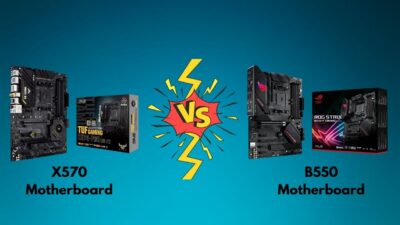
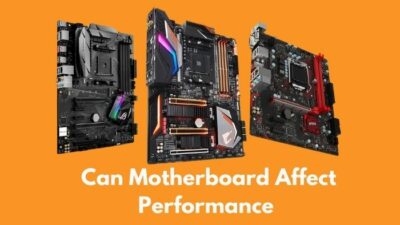


Great article, though not exactly what I’m looking for. My laptop failed, I took it apart to check and there was an electrical burn smell coming from the exact location on the motherboard where the battery connects to it. There were no power surges or excess electrical charges to cause it that I can determine (though something obviously happened). Is it designated as a fried motherboard due to this or is it possible to get the motherboard repaired rather than replaced? It’s the only thing preventing it from running. I only had it for a year. It was brand new when purchased in September of 2020. It’s the Lenovo Legion i7 series of laptops, made to be upgradable to stay up to speed with tech improvements.